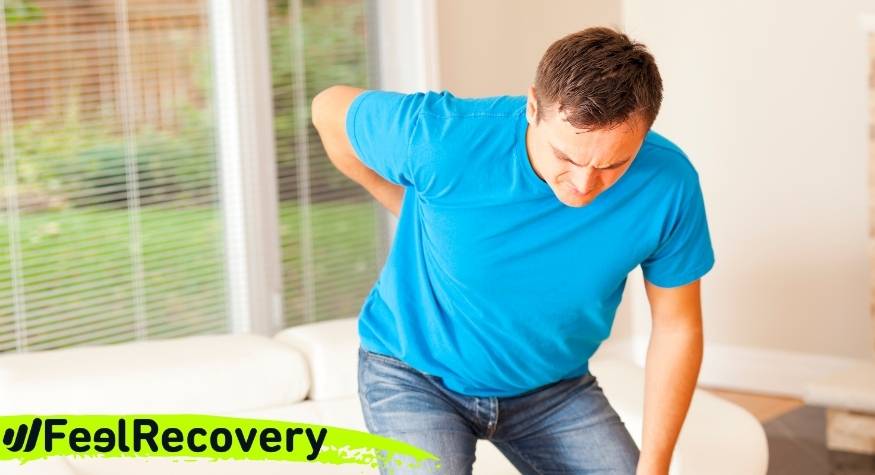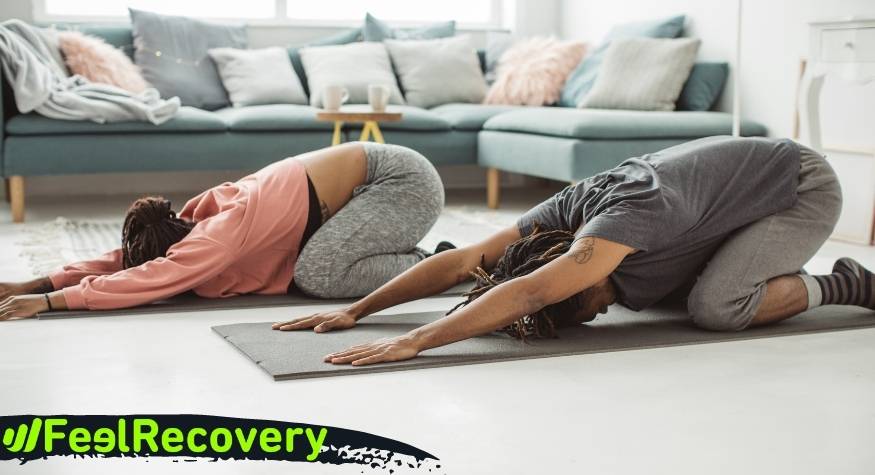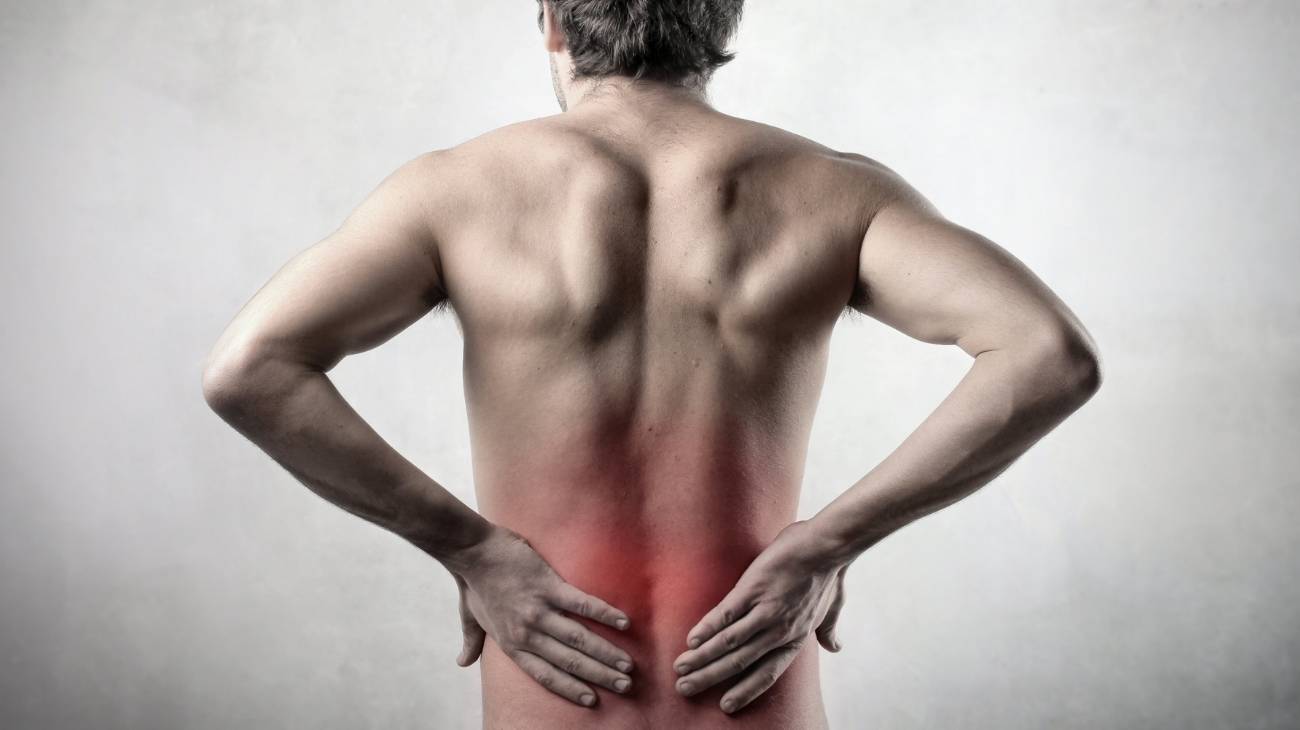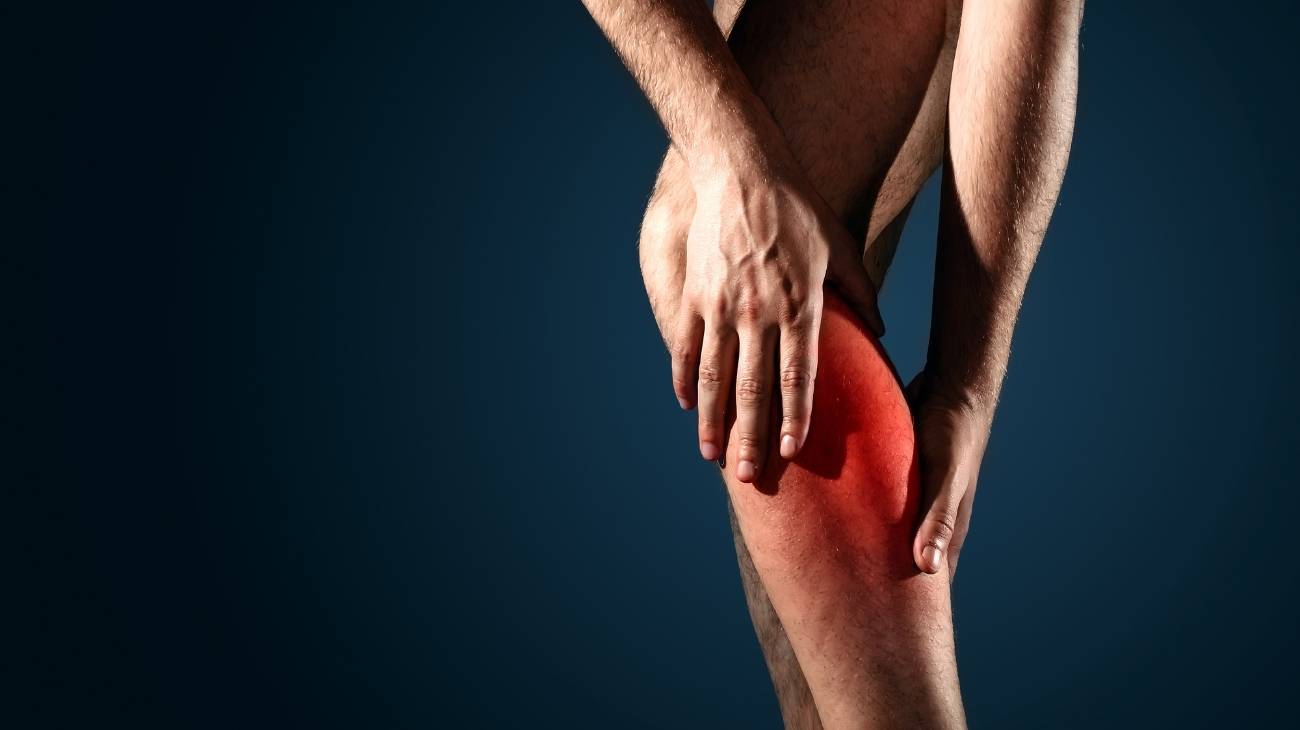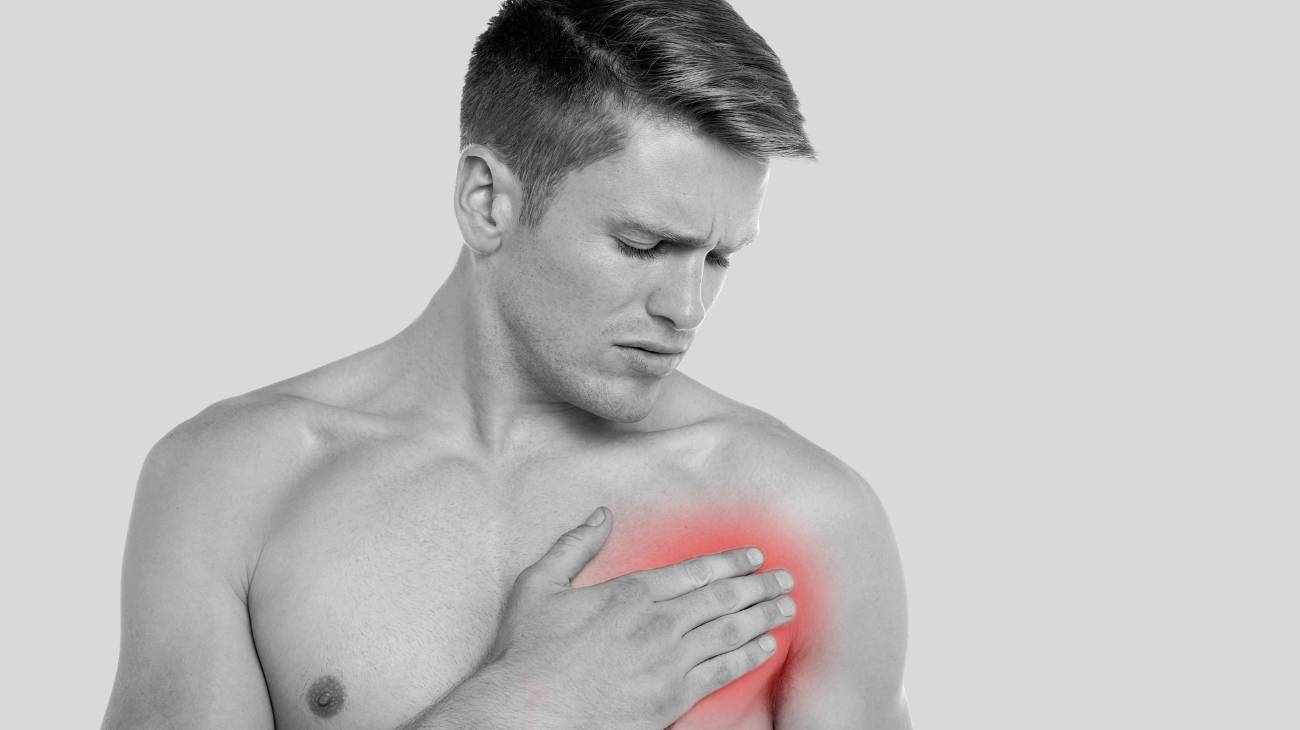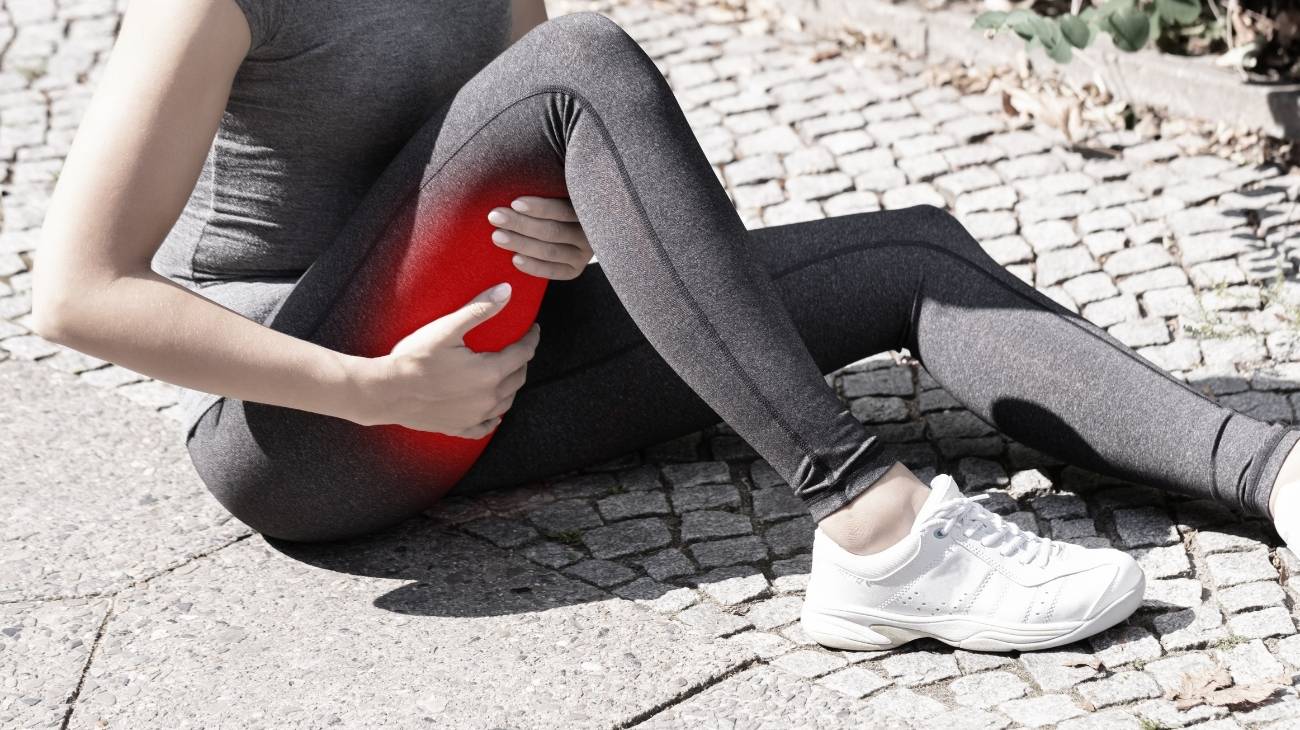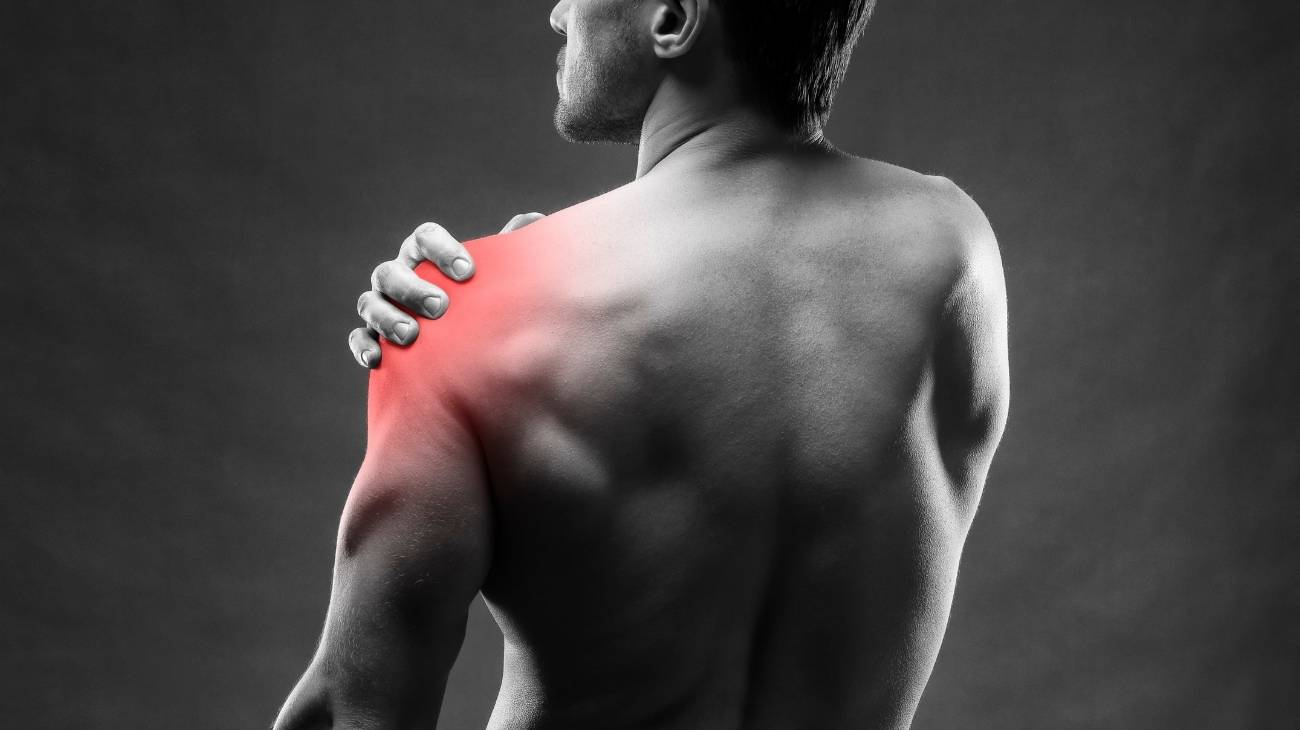- What are back and lumbar muscle strains?
- What are the causes of muscle strains in the lower back?
- Best products for back strains
- Main symptoms associated with back muscle strains
- How to relieve the pain and improve the symptoms of lower back muscle strains?
- What are the most effective methods of prevention for back muscle pulls?
Lumbar muscle strains or lumbago is an ailment that appears frequently in patients of different ages, although it is recurrent that older people are more prone to muscle injury. The lower back is affected by intense pain, lack of mobility and inflammation. But if you want to know more about this strain, read on.
We will show you the reasons why this disease appears and we will tell you in detail which are the treatments that will help you to reduce the symptoms of these lumbar strains. Finally, we will give you the best advice to avoid this ailment.
What are back and lumbar muscle strains?
Acute lumbar pain is caused by the involuntary and continuous tension suffered by the muscular structure located in the lower back. This is due to the inability of the blood to exchange oxygen and nutrients with the muscle fibres, causing an excessive accumulation of metabolites.
These molecules with waste substances become lodged in the soft tissues causing abnormal stiffness in the greater oblique, latissimus dorsi and psoas iliacus muscles. In some cases the symptoms can move to the gluteal and hamstring area, resulting in swelling, loss of movement, paraesthesia and, of course, pain.
What are the causes of muscle strains in the lower back?
There are different reasons or causes for muscle strains in the lower back. For this reason, we will show you each of them below
- Lack of rest: Demanding activities and a poor night's rest can lead to pulled muscles in the back. This causes the muscles to contract involuntarily leading to metabolites in the affected area.
- Age: While everyone is at risk of contracting muscle strains in the lower back, a major risk factor is the advanced age of patients. This is due to the lack of flexibility that muscles lose over time.
- Alterations in the spine: Any type of malformation or deformation of the lumbar vertebrae can cause low back pain due to the permanent strain on the muscles.
- Low levels of potassium and sodium: Nutrients such as magnesium, calcium and vitamins are essential to maintain the natural stiffness of the back. The absence of these components leads to muscle weakness and thus to contracture.
- Lack of daily movement: People who are sedentary or spend a lot of time sitting are more prone to lower back injuries. This is because the muscular structure is not used to performing normal movements.
- Infections and tumours: Although these causes are not so frequent, it is likely to find people with different types of infections and sacs that cause the appearance of strains in the lower back.
- Lack of stretching and pre-competitive exercises: Both people who work in demanding mechanical tasks or sportsmen and women should get the muscles used to it by means of gradual exercises that gradually lead to adequate elasticity. In addition, a lack of elongation can also lead to strains in the back.
- Tensions in the back due to stress: Daily worries, anxieties and frustrations can cause the muscles located in the lower back to contract involuntarily. This will cause the slightest effort in that area to strain the soft tissues.
- Cold temperatures: The body unconsciously reacts to the cold by contracting the muscular structure of the back. These involuntary movements can cause injury to the muscle fibres.
- Demanding tasks: Activities that require overexertion of the back are risk factors that can increase the likelihood of lumbar strains.
- Lack of hydration: Lack of water in the body can cause the tension of the muscle fibres to be incorrect, thus causing a back strain.
- Obesity: Being overweight forces the lower back muscles to strain permanently. This will cause fatigue in the tissues so that waste molecules are not eliminated by the blood in a normal way.
Best products for back strains
Bestseller
-
Acupressure Mat and Pillow (Black/Gray)
$49.95 -
Acupressure Mat and Pillow (Green/Navy)
$49.95 -
Acupressure Mat and Pillow (Pink/Bordeaux)
$49.95 -
Acupressure Pillow (Black/Gray)
$29.46 -
Acupressure Pillow (Green/Navy)
$29.46 -
Acupressure Pillow (Pink/Bordeaux)
$29.46 -
Back Support Belt (Black)
$34.95 -
Back Support Belt (Green)
$34.95 -
Back Support Belt (Pink)
$34.95 -
Heating Pad for Microwave Classic Bottle Shaped (Hearts)
$19.95 -
Heating Pad for Microwave Classic Bottle Shaped (Oxford)
$19.95 -
Heating Pad for Microwave Classic Bottle Shaped (Sport)
$19.95 -
High Density Foam Roller for Muscle (Black/Gray)
$29.95 -
High Density Foam Roller for Muscle (Green/Navy)
$29.95 -
High Density Foam Roller for Muscle (Pink/Bordeaux)
$29.95 -
Ice Massage Roller Ball (Black)
$39.95 -
Ice Massage Roller Ball (Green)
$39.95 -
Ice Massage Roller Ball (Pink)
$39.95 -
Microwave Heating Pad for Back Pain Relief (Extra Large) (Hearts)
$29.95 -
Microwave Heating Pad for Back Pain Relief (Extra Large) (Oxford)
$29.95 -
Microwave Heating Pad for Back Pain Relief (Extra Large) (Sport)
$29.95 -
Microwave Heating Pad for Neck & Shoulder Pain Relief (Hearts)
$24.95 -
Microwave Heating Pad for Neck & Shoulder Pain Relief (Oxford)
$24.95 -
Microwave Heating Pad for Neck & Shoulder Pain Relief (Sport)
$24.95 -
Microwaveable Heating Pad for Pain Relief (Hearts)
$19.95 -
Microwaveable Heating Pad for Pain Relief (Oxford)
$19.95 -
Microwaveable Heating Pad for Pain Relief (Sport)
$19.95 -
Pack 2 In 1 Foam Roller High + Soft Density (Black/Gray)
$29.95 -
Pack 2 In 1 Foam Roller High + Soft Density (Green/Navy)
$29.95 -
Pack 2 In 1 Foam Roller High + Soft Density (Pink/Bordeaux)
$29.95 -
Sacroiliac Support Belt (Black)
$24.95 -
Sacroiliac Support Belt (Green)
$24.95 -
Sacroiliac Support Belt (Pink)
$24.95 -
Soft Density Foam Roller for Recovery (Black)
$29.95 -
Soft Density Foam Roller for Recovery (Green)
$29.95 -
Soft Density Foam Roller for Recovery (Pink)
$29.95 -
Trigger Point Massage Stick (Black)
$14.95 -
Trigger Point Massage Stick (Green)
$14.95 -
Trigger Point Massage Stick (Pink)
$14.95
Main symptoms associated with back muscle strains
Low back pain or lumbago may present some or all of the following symptoms:
- Focalised pain: The most common and frequent symptom that appears in all cases of this type of injury. It may be constant or arise when the patient wishes to perform a movement.
- Partial or total lack of mobility: Movements are reduced when there are muscle pulls in the lower back area. This is due to the constant pressure on the nerve roots located in this area, which generate greater pain when the musculature is moved.
- Inflammation: Contractures appear largely due to the lack of correct irrigation of the blood vessels, which leads to the area becoming inflamed due to the large amount of toxic molecules found in the fibres.
- Appearance of lumps: When there is an involuntary contraction of the muscle, it retracts, causing a nodule that can be seen quite easily.
- Tingling: The sensation of numbness and tingling are frequent in this type of lesions caused by the malfunctioning of the nervous system located in this area and by the lack of proper blood circulation.
- Difficulty in performing everyday movements: It is common to find patients who cannot lift objects, bend over, walk fluidly or get out of bed. This is caused by tension in the muscles of the lower back.
How to relieve the pain and improve the symptoms of lower back muscle strains?
The symptoms that occur in the latissimus dorsi, oblique, rhomboid, round and spinous muscles can be treated with different therapies, which we show you in the following paragraphs.
Alternative and complementary therapies
See below the different types of auxiliary and complementary treatments that help to reduce the symptoms of back spasm:
- Hot and cold therapy: This technique consists of applying hot, then cold and then hot objects. The session should not last more than 20 minutes. It should be taken into account that in order to obtain the benefits of the cold, it is necessary that the temperature is not freezing, as this will damage the treatment due to the fact that the muscles will contract much more. For this reason it is necessary to consult a doctor so that this treatment can be applied correctly. Different techniques are used for its use; for example, compresses, water bags, electric blankets and gels.
- Compression therapy: The aim of this treatment is to dilate the capillary vessels, without breaking their walls, so that blood can flow properly through the affected area. This will help metabolites to be exchanged with the fibres that have residues so that inflammation and pain can be reduced. Special compression back support that fit the patient's lower back are usually used and in some cases this therapy is combined with complete rest to increase the benefits.
- Massage therapy: This is one of the most commonly used therapies for dorsal spasm. It involves rubbing, pressing and tapping the affected area by means of different techniques that generate heat in the muscular structure. This helps to relax the patient and the rhomboid, greater oblique and dorsal muscles so that they return to their normal tension, causing a feeling of wellbeing in the patient. It also helps the exchange of gases and fluids between the blood and soft tissues.
- Acupressure therapy: It is possible to apply this Chinese medicine by means of specific massages on special points of the body, through the use of the fingertips and the palms of the hands of the practitioner. The aim of this technique is for the patient to find a mental balance in order to reduce stress and allow total relaxation of the musculature, especially in the affected area.
- Thermotherapy: The benefits of heat for this type of injury are various, the most important being its effectiveness in reducing inflammation and pain. This is achieved thanks to the joining of the arterioles and small veins to cause the blood vessels to dilate and better irrigate the blood. In this way it is possible to exchange nutrients with the musculature.
- Natural remedies using plants: There are different types of plants that contain anti-inflammatory and relaxing benefits. For this reason, localised baths or teas are used in this technique to help reduce the symptoms. It is necessary to consult a doctor before choosing this complementary treatment, as any natural product could cause serious stomach and kidney damage if the side effects are not taken into account. Common herbs include rosemary, willow, ginger, peppermint, lavender, chamomile, linden, and citrus fruits.
- Healthy lifestyle habits: The therapies used to treat back cramps will be of no use if the patient is not aware of the importance of the daily actions he or she must perform. This means that the doctor must re-educate the patient so that not only the current muscular distension is reduced, but also so that these strains do not appear in the future. To this end, it is necessary to explain the need to maintain correct posture, exercise, eat healthily and protect the back when it needs to be strained.
Nutritional supplements
The inclusion of this type of element in the patient's nutrition should be consulted beforehand with the doctor in charge. This will avoid the appearance of future complications due to the side effects that the syrups, powders, liquids or tablets of the food supplements may have.
The aim of this type of treatment is to incorporate nutrients into the patient's body in order to stimulate a correct exchange of oxygen and fluid between the blood and the muscles located in the lumbar region of the back. This usually includes magnesium, potassium, B vitamins, omega 3, sodium and calcium.
Physiotherapy treatments
This treatment aims to increase the flexibility of the psoas iliacus, piriformis and quadratus lumborum muscles. On the other hand, it aims at a correct flexion of the latissimus dorsi, rhomboid, spinous, round and oblique muscles.
For this, it is based on different techniques that provoke heat in this muscular structure. Among the most common criteria used by physiotherapists are stretching exercises, repetitive and short movements, electrotherapy, ultrasound, hydrotherapy and localised laser treatments. It is necessary to keep in mind that this type of therapy must be carried out by professionals, otherwise the injuries could be extended and cause irreversible damage to the muscles.
Medications
The most important thing to bear in mind in this type of treatment is that self-medication is never beneficial, as it can cause internal haemorrhages, intestinal discomfort and liver damage due to the side effects of the drugs taken.
For this reason, drug-based therapy must be prescribed and monitored by a physician to avoid future complications. Within this type of treatment, opioid analgesics, non-steroidal anti-inflammatory drugs and muscle relaxants can be found. In patients where low back pain is caused by seizures, the drugs used are Pregabilin and Lamotrigine as anticonvulsants.
What are the most effective methods of prevention for back muscle pulls?
If you don't want to look like a lumbar muscle strain you need to take these tips into account:
- Reduce stress: Worries and frustrations unconsciously produce muscular tension throughout the body, especially in the back. For this reason it is advisable to practice relaxation methods and breathing techniques to reduce anxiety.
- Don't cool your back: If you stay too long in a cold place without moving too much, you can injure the muscular structure of your back, causing strains. This means that you should avoid getting cold and, if for any reason you have to be exposed to freezing temperatures, you should make sure you wrap up properly.
- Warm up before starting an activity: Before starting an activity, it is important to prepare your muscles so that they do not start with sudden movements. This will help blood circulation to flow better.
- Stretch all the muscles of the back: Stretching is an important aspect that you should take into account when you finish physical activities or jobs that make demands on the lower back. There are different techniques, but the most common is to lie on your back and bring your knees to your pectorals, then turn your body and gently lift your upper torso.
- Avoid high-demanding activities: Don't forget that overexertion occurs when you have to repeat movements constantly and for long periods of time or lift heavy objects without adequate protection. These types of actions should be avoided in order to keep your muscular structure in good condition.
- Rest for the necessary time: If you are an athlete or work in places where you have to make maximum demands on your back, remember to protect your lower back and rest every so often so that your muscles can rest and return to normal tension.
- Avoid a sedentary lifestyle and eat healthy: An important cause of lumbar spasm is the lack of exercise and poor diet. For this reason, it is advisable to go for a walk or any other physical activity and to choose foods that are much richer in vitamins and proteins, thus avoiding fat. This should be accompanied by good hydration.
- Incorporate foods with magnesium and potassium into your diet: It is also important that sodium, calcium and vitamins D, E, B1 and B3 are present in the food you eat.
References
- Alexander, M. J. (1985). Biomechanical aspects of lumbar spine injuries in athletes: a review. Canadian journal of applied sport sciences. Journal canadien des sciences appliquees au sport, 10(1), 1-20. https://europepmc.org/article/med/4006039
- Bono, C. M. (2004). Low-back pain in athletes. JBJS, 86(2), 382-396. https://journals.lww.com/jbjsjournal/Abstract/2004/02000/Low_Back_Pain_in_Athletes.27.aspx
- Cohen, S. P., Argoff, C. E., & Carragee, E. J. (2008). Management of low back pain. Bmj, 337. https://www.bmj.com/content/337/bmj.a2718.full.pdf+html
- Koes, B. W., Van Tulder, M., & Thomas, S. (2006). Diagnosis and treatment of low back pain. Bmj, 332(7555), 1430-1434. https://www.bmj.com/content/332/7555/1430.short
- Krismer, M., & Van Tulder, M. (2007). Low back pain (non-specific). Best practice & research clinical rheumatology, 21(1), 77-91. https://www.sciencedirect.com/science/article/abs/pii/S1521694206001082
- Glick, J. M. (1980). Muscle strains: prevention and treatment. The Physician and sportsmedicine, 8(11), 73-77. https://www.tandfonline.com/doi/abs/10.1080/00913847.1980.11710969
- Garrett Jr, W. E. (1996). Muscle strain injuries. The American journal of sports medicine, 24(6_suppl), S2-S8. https://journals.sagepub.com/doi/abs/10.1177/036354659602406S02
- Orchard, J., Best, T. M., & Verrall, G. M. (2005). Return to play following muscle strains. Clinical Journal of Sport Medicine, 15(6), 436-441. https://journals.lww.com/cjsportsmed/Abstract/2005/11000/Return_to_Play_Following_Muscle_Strains.8.aspx
- Garrett Jr, W. E. (1990). Muscle strain injuries: clinical and basic aspects. Medicine and science in sports and exercise, 22(4), 436-443. https://europepmc.org/article/med/2205779
- Järvinen, T. A., Kääriäinen, M., Järvinen, M., & Kalimo, H. (2000). Muscle strain injuries. Current opinion in rheumatology, 12(2), 155-161. https://journals.lww.com/co-rheumatology/Abstract/2000/03000/Muscle_strain_injuries.10.aspx


























































